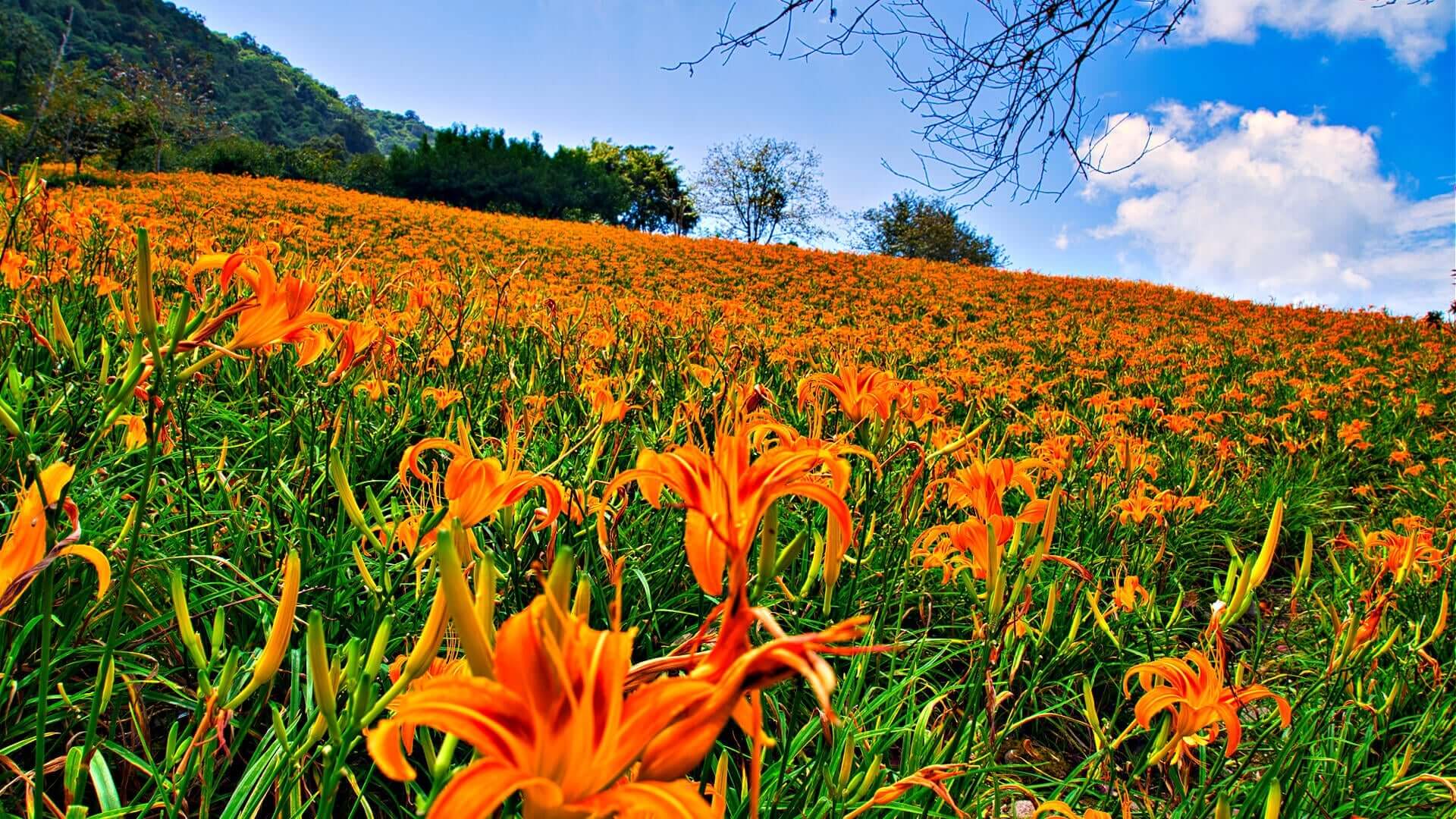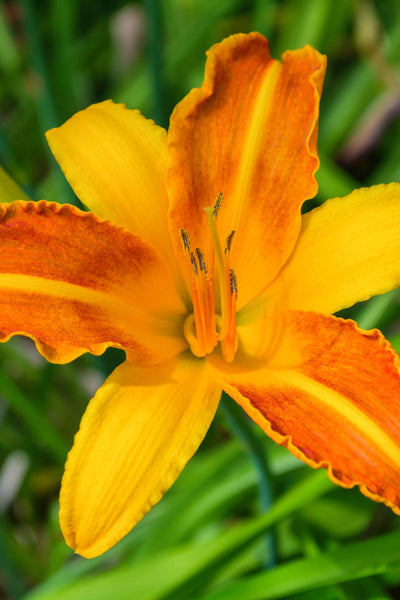Landscaping is an art form that combines horticulture and design principles to create visually pleasing and functional outdoor spaces. In landscaping, the daylily, scientifically known as Hemerocallis, is a versatile and popular choice. With its numerous cultivars and a wide range of colors, daylilies offer a canvas of beauty that can transform gardens, borders, and landscapes. In this article, we will explore the various types of daylilies, their benefits, their importance in landscaping, and their uses in creating stunning outdoor environments.
The Many Faces of Daylilies
Daylilies are perennial plants known for their vibrant and striking blooms. They belong to the genus Hemerocallis, derived from two Greek words: "hēmera," meaning day, and "Kalos," meaning beauty, emphasizing the ephemeral nature of their blossoms. These plants are native to Asia, primarily China and Japan, but have become widely cultivated and cherished by gardeners around the world.
One of the remarkable features of daylilies is their incredible diversity. There are thousands of registered daylily cultivars, each with its unique combination of colors, patterns, and sizes. These cultivars can be broadly categorized into several types:
1. Single Blooming Daylilies: These daylilies produce a single set of blooms on each stem, typically in early to midsummer. They are known for their simplicity and elegance. Varieties like 'Stella de Oro' are famous for their repeat flowering throughout the season.
2. Double Blooming Daylilies: Unlike the single-blooming varieties, double-blooming daylilies produce multiple layers of petals, creating a more complex and lush appearance. Examples include 'Bela Lugosi' and 'Strawberry Candy.'
3. Spider Daylilies: They have long, narrow, and twisting petals, giving them a spider-like appearance. Their unique form adds a touch of exoticism to any garden. Varieties like 'Daring Deception' and 'Always Afternoon' fall into this category.
4. Miniature Daylilies: These diminutive daylilies are perfect for smaller spaces or container gardens. They produce small but vibrant blooms and include varieties like 'Little Grapette' and 'Bitsy.'
5. Fragrant Daylilies: Some daylilies are prized not only for their appearance but also for their delightful fragrance. Varieties like 'Hyperion' and 'Summer Wine' fill the garden with a sweet aroma.
6. Unusual Forms: Within the world of daylilies, there are numerous unusual forms, including cascading, polymerous (extra petals), and cristate (crested) forms. These varieties cater to the most discerning gardeners seeking unique and eye-catching specimens.
Benefits of Daylilies in Landscaping
The popularity of daylilies in landscaping is well-deserved, given their numerous benefits:
1. Vibrant Colors: Daylilies are available in a broad spectrum of colors, including shades of red, orange, yellow, pink, and lavender. This versatility allows landscapers to choose varieties that complement the overall design or create bold focal points.
2. Long Blooming Period: One of the critical advantages of daylilies is their extended blooming season, which can span several weeks to months, depending on the cultivar. This prolonged display of color ensures that the landscape remains visually appealing throughout the growing season.
3. Low Maintenance: Daylilies are excellent for novice and experienced gardeners due to their low maintenance needs. They are adaptable to various soil types and can tolerate multiple environmental conditions.
4. Erosion Control: The dense clumps of daylilies can help control soil erosion on slopes and banks, making them a valuable addition to landscapes with such challenges.
5. Wildlife Attraction: Daylilies attract pollinators such as bees and butterflies, contributing to biodiversity in the garden. Additionally, their dense foliage provides shelter for small animals.
6. Versatile Use: Daylilies can be used in various landscaping settings, including borders, beds, containers, and ground covers. Their adaptability and aesthetic appeal make them suitable for multiple design concepts.
Importance of Daylilies in Landscaping
Daylilies play a pivotal role in landscaping for several reasons:
Aesthetic Appeal: Daylilies are known for their captivating beauty. They serve as focal points, accents, or mass plantings, enhancing the visual appeal of any landscape. The variety of available colors and forms allows landscapers to create diverse and captivating compositions.
Seasonal Interest: Daylilies provide continuous interest throughout the growing season. Whether used as part of a larger landscape design or in standalone clusters, their blooms contribute to the evolving beauty of outdoor spaces.
Design Flexibility: Landscapers appreciate the flexibility that daylilies offer. Various design styles can incorporate them, from formal gardens to naturalistic landscapes, and they can be combined with other plants to create harmonious arrangements.
Space Utilization: Daylilies are versatile in their use of space. They can be utilized as ground covers to suppress weeds, planted in containers on patios and decks, or grown along borders to define pathways and garden beds.
Low-Maintenance Landscaping: Many homeowners and landscapers prefer low-maintenance plants to reduce the effort required for upkeep. Daylilies fit this criterion perfectly, making them an excellent choice for busy individuals or those looking for sustainable landscaping options.
Uses of Daylilies in Landscaping
The benefits of daylilies in landscaping are as diverse as the plant itself:
Garden Borders: Planting daylilies along the edges of garden beds and borders can define spaces, add color, and create a sense of structure within the landscape.
2. Mass Plantings: Daylilies are often used in large groupings to create dramatic sweeps of color. Mass plantings are especially effective in open areas and can make a visually striking impact.
Rock Gardens: Their adaptability makes daylilies suitable for rock gardens, where they can provide color and texture in spaces with limited soil depth.
Container Gardening: Miniature daylily varieties are ideal for container gardening. Their small size and prolific blooming add charm to decks, patios, and balconies.
Naturalistic Landscapes: In natural landscapes, daylilies can be combined with other native or low-maintenance plants to create a harmonious, eco-friendly environment.
Water Gardens: Some daylilies can thrive in moist or boggy conditions, making them suitable for planting around ponds and water features.
Cutting Gardens: Fragrant and double-blooming daylilies are excellent for cutting gardens. Their long-lasting blooms can be used to create stunning floral arrangements.
In conclusion, daylilies are an indispensable element in the world of landscaping. Their vast array of colors, adaptability, low maintenance requirements, and aesthetic appeal make them a go-to choice for gardeners and landscapers alike. Whether used as standalone specimens or integrated into elaborate landscape designs, daylilies bring beauty and vitality to outdoor spaces, making them an essential canvas for landscaping enthusiasts seeking to create stunning and sustainable environments.


